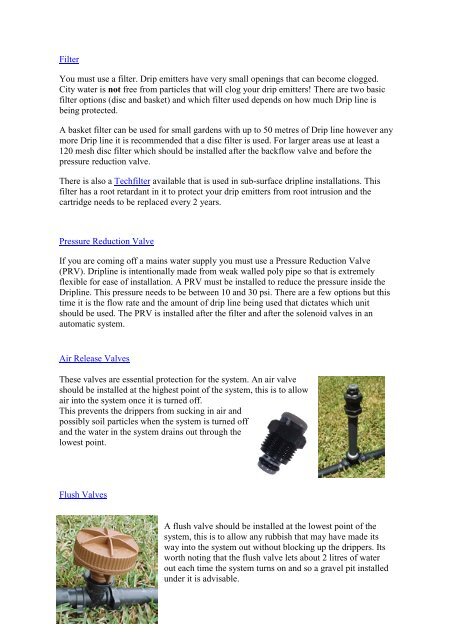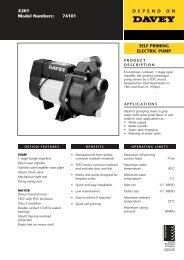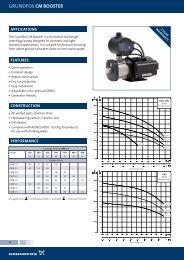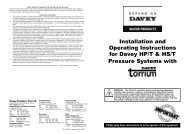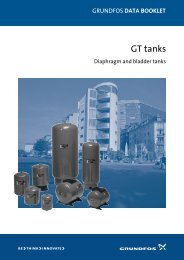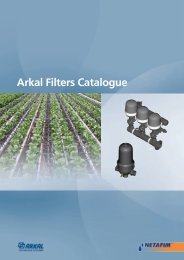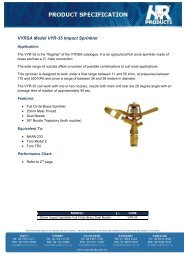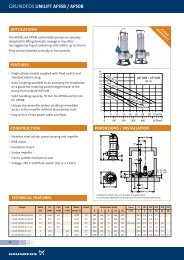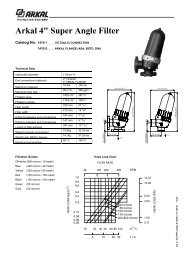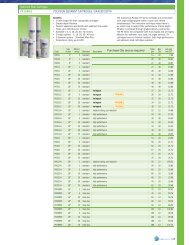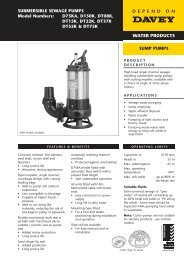What is Drip Irrigation? - Dural Irrigation
What is Drip Irrigation? - Dural Irrigation
What is Drip Irrigation? - Dural Irrigation
You also want an ePaper? Increase the reach of your titles
YUMPU automatically turns print PDFs into web optimized ePapers that Google loves.
Filter<br />
You must use a filter. <strong>Drip</strong> emitters have very small openings that can become clogged.<br />
City water <strong>is</strong> not free from particles that will clog your drip emitters! There are two basic<br />
filter options (d<strong>is</strong>c and basket) and which filter used depends on how much <strong>Drip</strong> line <strong>is</strong><br />
being protected.<br />
A basket filter can be used for small gardens with up to 50 metres of <strong>Drip</strong> line however any<br />
more <strong>Drip</strong> line it <strong>is</strong> recommended that a d<strong>is</strong>c filter <strong>is</strong> used. For larger areas use at least a<br />
120 mesh d<strong>is</strong>c filter which should be installed after the backflow valve and before the<br />
pressure reduction valve.<br />
There <strong>is</strong> also a Techfilter available that <strong>is</strong> used in sub-surface dripline installations. Th<strong>is</strong><br />
filter has a root retardant in it to protect your drip emitters from root intrusion and the<br />
cartridge needs to be replaced every 2 years.<br />
Pressure Reduction Valve<br />
If you are coming off a mains water supply you must use a Pressure Reduction Valve<br />
(PRV). <strong>Drip</strong>line <strong>is</strong> intentionally made from weak walled poly pipe so that <strong>is</strong> extremely<br />
flexible for ease of installation. A PRV must be installed to reduce the pressure inside the<br />
<strong>Drip</strong>line. Th<strong>is</strong> pressure needs to be between 10 and 30 psi. There are a few options but th<strong>is</strong><br />
time it <strong>is</strong> the flow rate and the amount of drip line being used that dictates which unit<br />
should be used. The PRV <strong>is</strong> installed after the filter and after the solenoid valves in an<br />
automatic system.<br />
Air Release Valves<br />
These valves are essential protection for the system. An air valve<br />
should be installed at the highest point of the system, th<strong>is</strong> <strong>is</strong> to allow<br />
air into the system once it <strong>is</strong> turned off.<br />
Th<strong>is</strong> prevents the drippers from sucking in air and<br />
possibly soil particles when the system <strong>is</strong> turned off<br />
and the water in the system drains out through the<br />
lowest point.<br />
Flush Valves<br />
A flush valve should be installed at the lowest point of the<br />
system, th<strong>is</strong> <strong>is</strong> to allow any rubb<strong>is</strong>h that may have made its<br />
way into the system out without blocking up the drippers. Its<br />
worth noting that the flush valve lets about 2 litres of water<br />
out each time the system turns on and so a gravel pit installed<br />
under it <strong>is</strong> adv<strong>is</strong>able.


